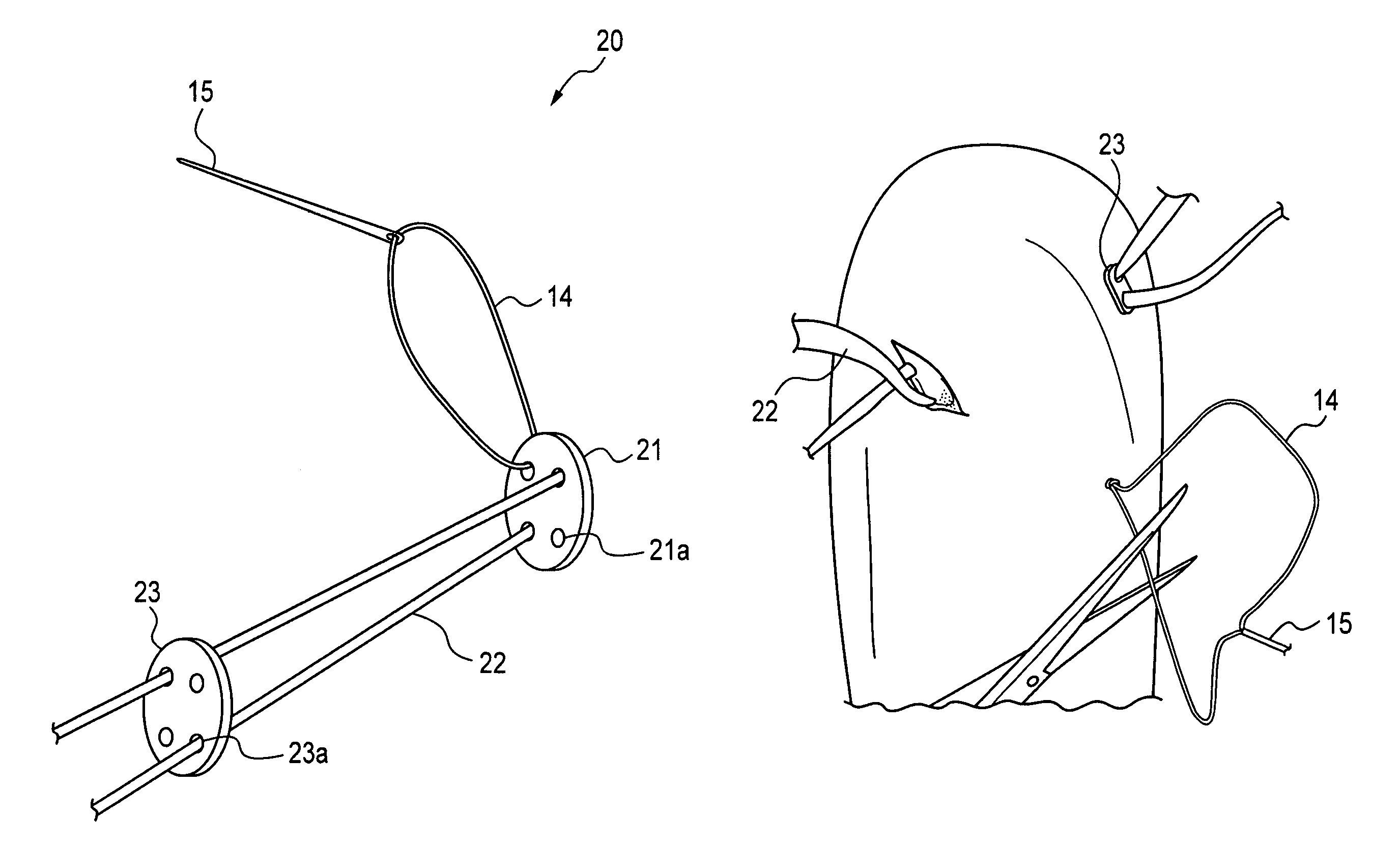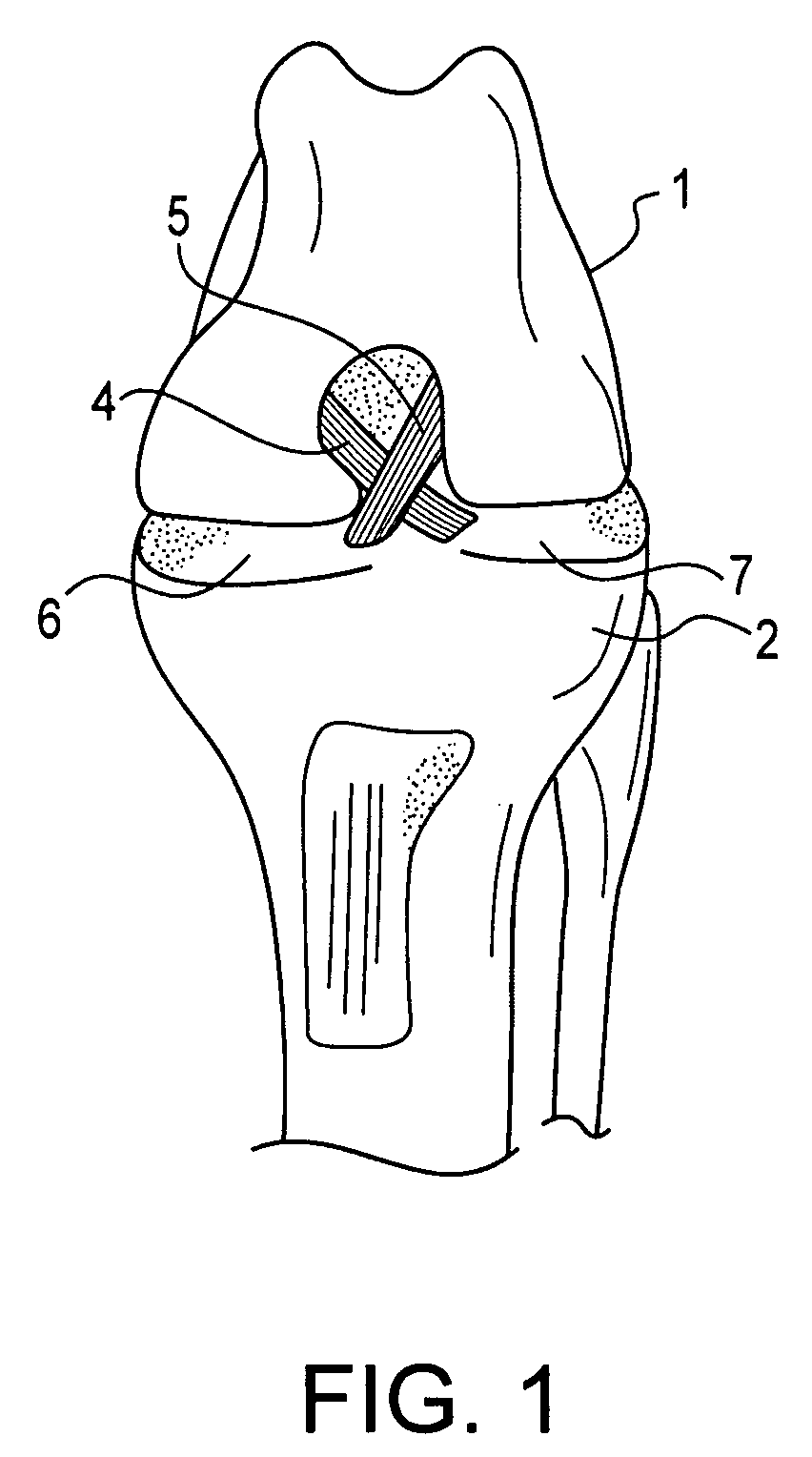Method and suture-button construct for stabilization of cranial cruciate ligament deficient stifle
a cranial cruciate ligament and stifle technology, applied in the field of surgery, can solve the problems of partial or complete joint instability, pain, lameness,
- Summary
- Abstract
- Description
- Claims
- Application Information
AI Technical Summary
Benefits of technology
Problems solved by technology
Method used
Image
Examples
second embodiment
Suture-Button Construct—Second Embodiment
[0078]Referring to FIG. 24, a suture-button construct 10, in accordance with a second embodiment of the present invention, is formed of a third button 12, a fourth button 11, a first suture strand 13 double looped through the apertures 11a (FIG. 25), 12a (FIG. 26) of the first button 11 and the second button 12. The suture-button construct 10 also includes a pull-through needle 15 with a pull-through suture strand 14 looped through an aperture 12a (FIG. 26) of the first button 12. The first button 12 is preferably oblong in shape (FIG. 26). The second button 11 is preferably round in shape (FIG. 25).
[0079]
TABLE 1Apparatus of the present inventionFirst ButtonOverall dimensions:8.0 mm (length) × 2.6 mm (width) × 1.3 mm (thickness)Basic shape:Oblong in plan shape, with chamfered or rounded cornersand edges - this reduces the chance of the button beingpalpated under the skin and in addition, eases the passage ofthe first button through the drill ...
PUM
 Login to View More
Login to View More Abstract
Description
Claims
Application Information
 Login to View More
Login to View More - R&D
- Intellectual Property
- Life Sciences
- Materials
- Tech Scout
- Unparalleled Data Quality
- Higher Quality Content
- 60% Fewer Hallucinations
Browse by: Latest US Patents, China's latest patents, Technical Efficacy Thesaurus, Application Domain, Technology Topic, Popular Technical Reports.
© 2025 PatSnap. All rights reserved.Legal|Privacy policy|Modern Slavery Act Transparency Statement|Sitemap|About US| Contact US: help@patsnap.com



